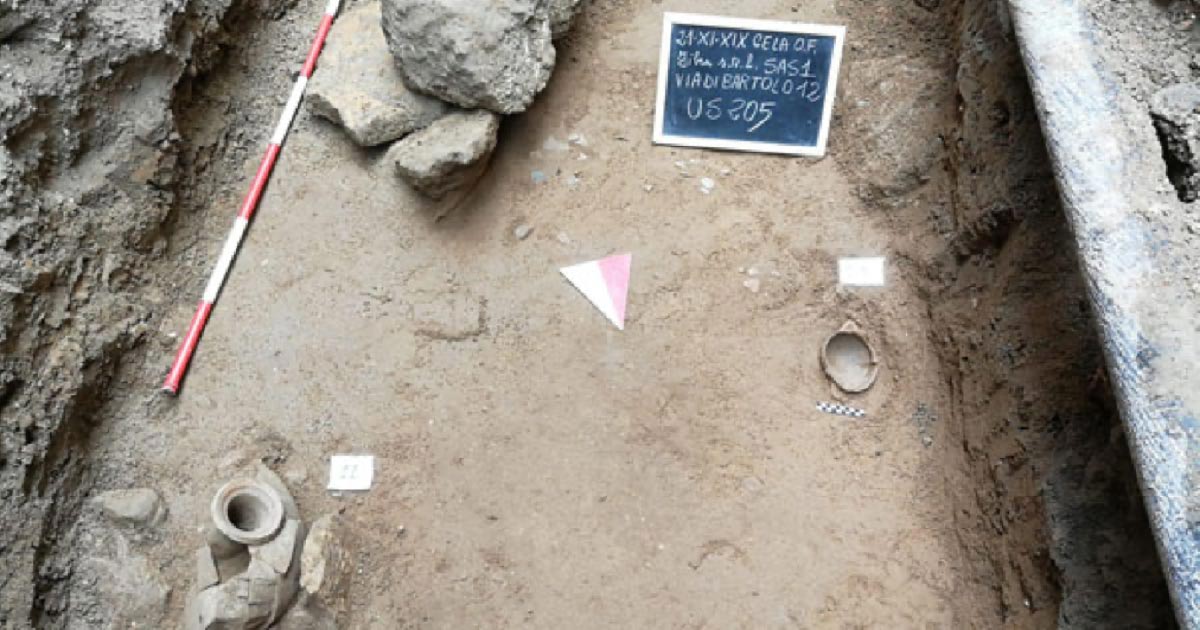Unusual Greek Baby Burial Unearthed in Sicily
An unusual discovery has been made on the Italian island of Sicily. A 2700-year-old burial of a new-born infant has been unearthed accompanied by the remains of an animal. The find is expected to help researchers better understand the early history of the Greek settlements on the island.
This discovery was made by a team of workers who were installing fiber optic cables under a road in the Via Di Bartolo, in Gela, in the south of Sicily. While digging beneath the road they came across a number of buried items. The workers, employed by Opera Fiber, alerted the company’s in-house archaeologist, Gianluca Calà. Under Italian law, any finds of historic significance must be investigated.
Infant Bones in a Jug
Newsweek reports that the “excavations had uncovered a ceramic jug which contained the bones of new-born baby”. The jug or vase is a hydria which was “normally used as a water container but also as a funerary urn” reports the Regione Siciliana. The rim of the jug or vase is decorated with a wave design and it has a handle.
The remains of the baby had been placed into the hydria prior to burial. In the past, there was a shockingly high infant mortality rate and the death of young children was very common. The find was made in a necropolis that dates back to the 7 th and 6 th century BC. At the time, this part of Sicily was settled by a large number of Greek colonies. There were once so many Greeks in Sicily and Southern Italy that the Romans referred to this region as Magna Graecia.

Example of an (ornate) 4 th century BC Greek hydria. (Archaeology Museum of Catalonia / Public Domain)
Animal Rites
So along with the bones of the young child were some remains from a large animal. Archaeologists theorize the reason for this may be related to Ancient Greek funerary practices. The press release states that it seems likely that the hydria with the infant remains, “was probably deposited during the funeral rite, accompanied by slaughter and cooking of large animals.” It is therefore likely that the animal bones are related to a religious ceremony and beliefs about the afterlife. The find shows that Greek colonists in Sicily continued to practice the traditional Hellenic religion, including sacrifices.
- SICILY: WHERE CULTURES AND HISTORIES CONVERGE AND GIANTS ROAM
- STABBED IN THE BACK AND BURIED FACE-DOWN: A DEVIANT MEDIEVAL BURIAL FOUND IN SICILY
- ROGER DE FLOR AND HIS CATALAN COMPANY: FROM KNIGHT TEMPLAR TO PIRATE – PART I
Greek Colony in Sicily
Local Italy quotes Cala as stating that “Gela gives us other extraordinary testimonies of the past” Indicating there have been other important finds in the Greek burial ground. In total, some 20 ceramic finds have been located at the Greek necropolis, which were probably made in Rhodes about 500 BC. Another important find was a cup in the ‘Proto-Corinthian style dating back to between 700 and 651 B.C’ reports Newsweek.
The previous month a sarcophagus with a complete skeleton from the same era was also unearthed. These are once again demonstrating the importance of Gela during the Greek colonization of the island. This necropolis was first excavated in the early 1900s by Paolo Orsini and until the recent discoveries, it was believed that he had found all the burials at the site.
First Settlers Remains
The ancient cemetery apparently holds the remains of some of the first colonists from Greece who came to the beautiful Italian island. The first settlers came from Rhodes and Crete around the 8 TH century BC. La Sicillia reports that the necropolis is “the cemetery of the first settlers who founded and lived in the polis of Gela”. This settlement later became a very important city in Greek and later Roman Sicily.
The infant burial has thrown a light on the history of Magna Graecia and the early settlers’ beliefs and customs. The Sicilian Regional government has reiterated its commitment to conserve and protect the site. Opera Fiber has expressed a willingness to expand the excavation to determine if there are more burials to be found in the general area of the infant burial.
Top image: Infant burial site, Gela, Sicily. Source: Regione Siciliana
By Ed Whelan




















Comments
Bravo!
Daniela